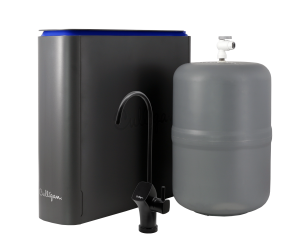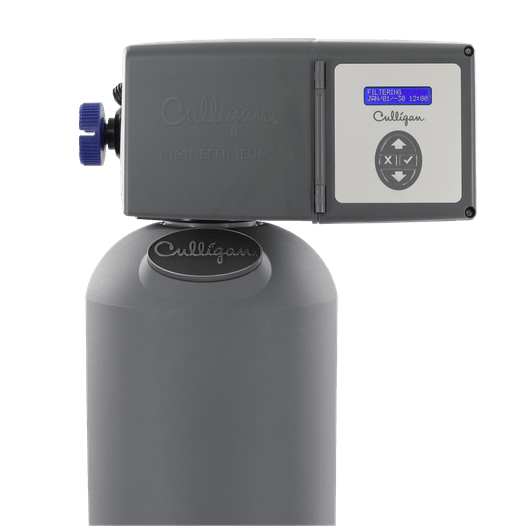Lead In Your Drinking Water
In the U.S., 14-20% of lead exposure is attributed to drinking water. Municipalities have taken action over the past 30 years to ban lead solder, reduce corrosivity and remove lead from brass faucets and water meters, and these measures have significantly helped exposure issues.
Studies are show that lead at even its most minute levels can cause neurological, learning and IQ defects in children, and that these lower levels but widespread exposures can have large health effects.
Lead lends itself very easily to building pipes – like those used for transporting water. It’s malleable, relatively cheap to use and, as a result, its use in plumbing dates back to early Roman cities. Lead piping was also the standard in the United States until the 1920s and 30s, when concerns about lead poisoning became better understood.
How Lead Enters Drinking Water Systems
The most common way lead can enter a drinking water system is through corrosive aging pipes and plumbing infrastructure. Many homes, and sometimes entire communities, have plumbing infrastructure that has not been updated for decades, and sometimes more than a century.
These homes are at high risk for lead contamination, even if the water coming through it has been properly treated.
When pipes, fitting or solder have become corroded, water can become contaminated.
Proactive Prevention: The Best Deterrent
The best way to avoid a lead problem is to never have one. Despite the ongoing issues in many cities throughout America, many homeowners are simply not keen in getting a simple water test.
A test can determine whether your household has tap water, and whether this exposure can be avoided in the interim by flushing it for a specified amount of time. Knowing this can be the difference between your family becoming exposed to lead in tap water.

Why Is Lead in Water Dangerous?
In addition to its once widespread use, and continued use in some plumbing fittings and solder, lead is virtually undetectable in water. Since you can’t see, taste, or smell it, prolonged exposure can be common. Lead in drinking water is especially harmful for young children and pregnant women, but is not safe for anyone to consume, in any concentration.
For children, the effects of consuming lead-contaminated water are especially high. Once consumed, lead remains in our bodies or ‘bioaccumulates’, as we can’t flush the contaminant from our system. Once there, lead can cause serious behavioral and cognitive problems for children, and over time it can lead to:
- Low IQ
- Hyperactivity
- Slowed, delayed, and stunted growth
- Problems hearing
- Anemia
- Seizures, coma, and possibly even death in severe situations
Lead also crosses the placenta, so it’s especially important for pregnant women to avoid drinking water contaminated with lead. In addition to harming the mother, it can cause stunted fetal growth and premature birth.
For the average adult, lead exposure from water can cause heart and cardiovascular issues, reduce kidney function, and contribute to reproductive problems.
The degree and severity of these issues depends on how much lead you’ve been exposed to, and how much is stored in your body, though governing health authorities like the Centers for Disease Control (CDC) caution that no amount of lead is safe.
Synopsis of Flint Crisis

The Flint Crisis was a situation where the water was improperly treated – specifically, a severe act of negligence on the part of public officials failing to add corrosion inhibitors to the water. Given the heightened sense of awareness and knowledge of the issue, another such problem is likely not in the realm of possibility.
However, that doesn’t mean all water in your home is safe. Even treated water can leach lead into its supply if your pipes or fixtures are made of lead.
The final tally on the Flint Water Crisis, which included e.coli bacteria, THMs, lead, and a Legionnaire’s disease outbreak, resulted in 6,000 to 12,000 children exposed to lead and a slew of lawsuits, investigations, resignations and criminal indictments.
Solutions
Suggested Products

The Aquasential® Smart Reverse Osmosis Water Filter (RO)
- 7 stages of filtration and 12 filter options
- Certified for reduction of 58 contaminants
- 2-in-1 sediment and carbon filter screens out sediment and particles
- Can alert you and your dealer when service or filter replacements are needed

Aquasential™ Smart High Efficiency Whole House Water Filters
Reduce sediments in your water and contaminants that cause your water to appear, taste, and smell unpleasant. Your system can also lessen the taste and odor of chlorine, and prevent pipe damage and staining from low pH water. Additional customizations include:
- Culligan® Filtr-Cleer® Water Filters – Reduces Sediment Problems
- Culligan® Cullar® Water Filters – Reduces Taste and Odor Problems
- Culligan® Cullneu Water Filters – Reduces Acid Problems

Facebook